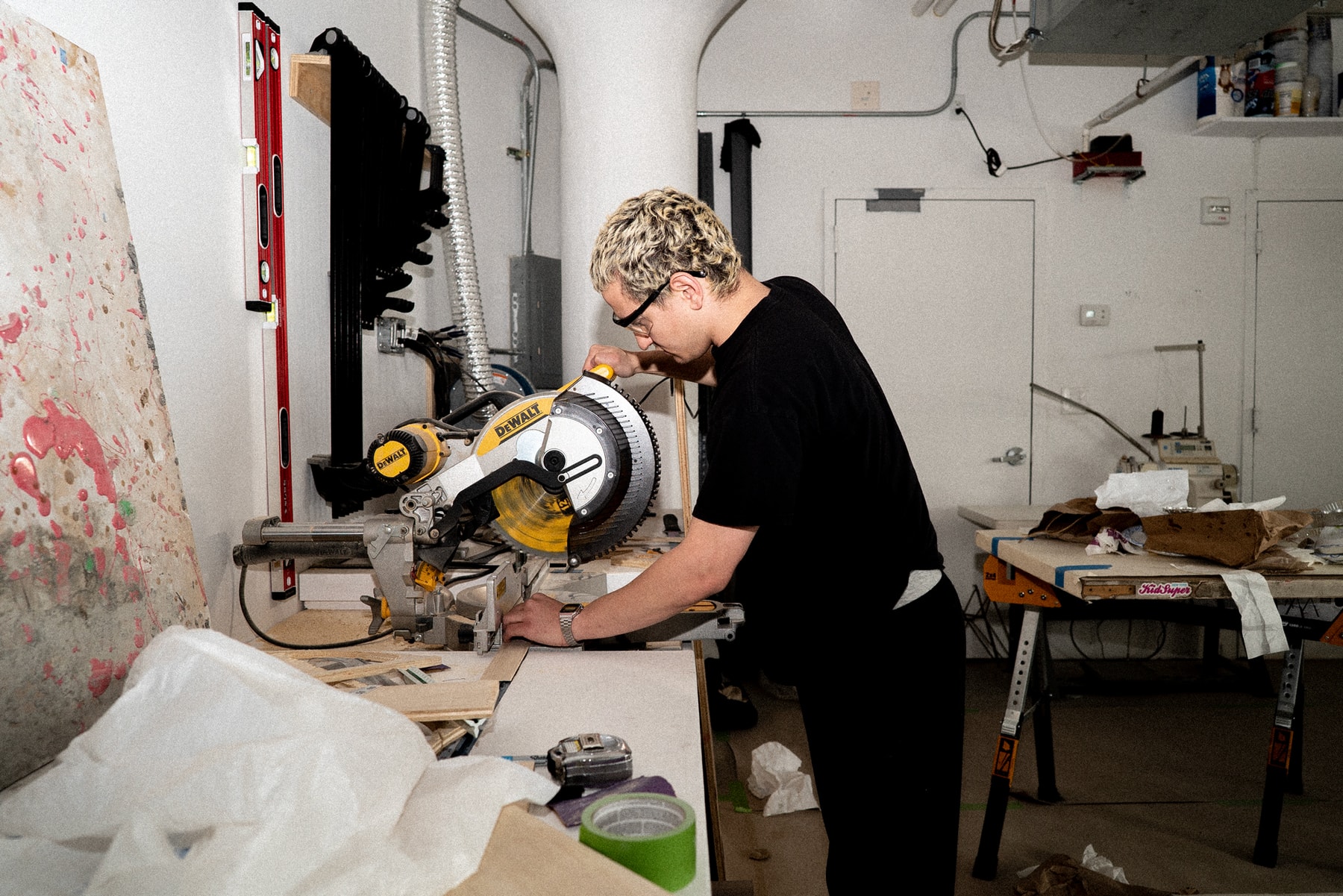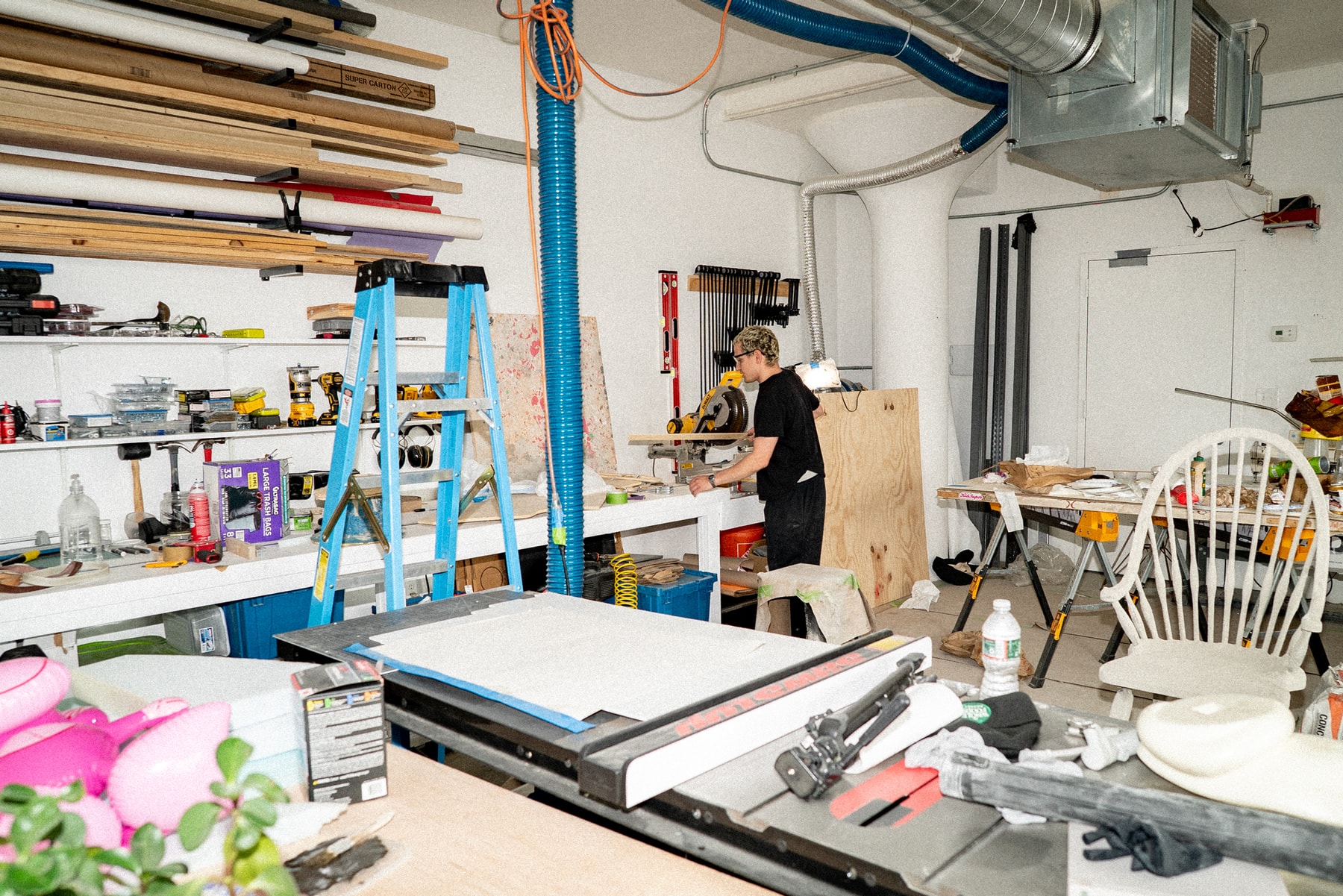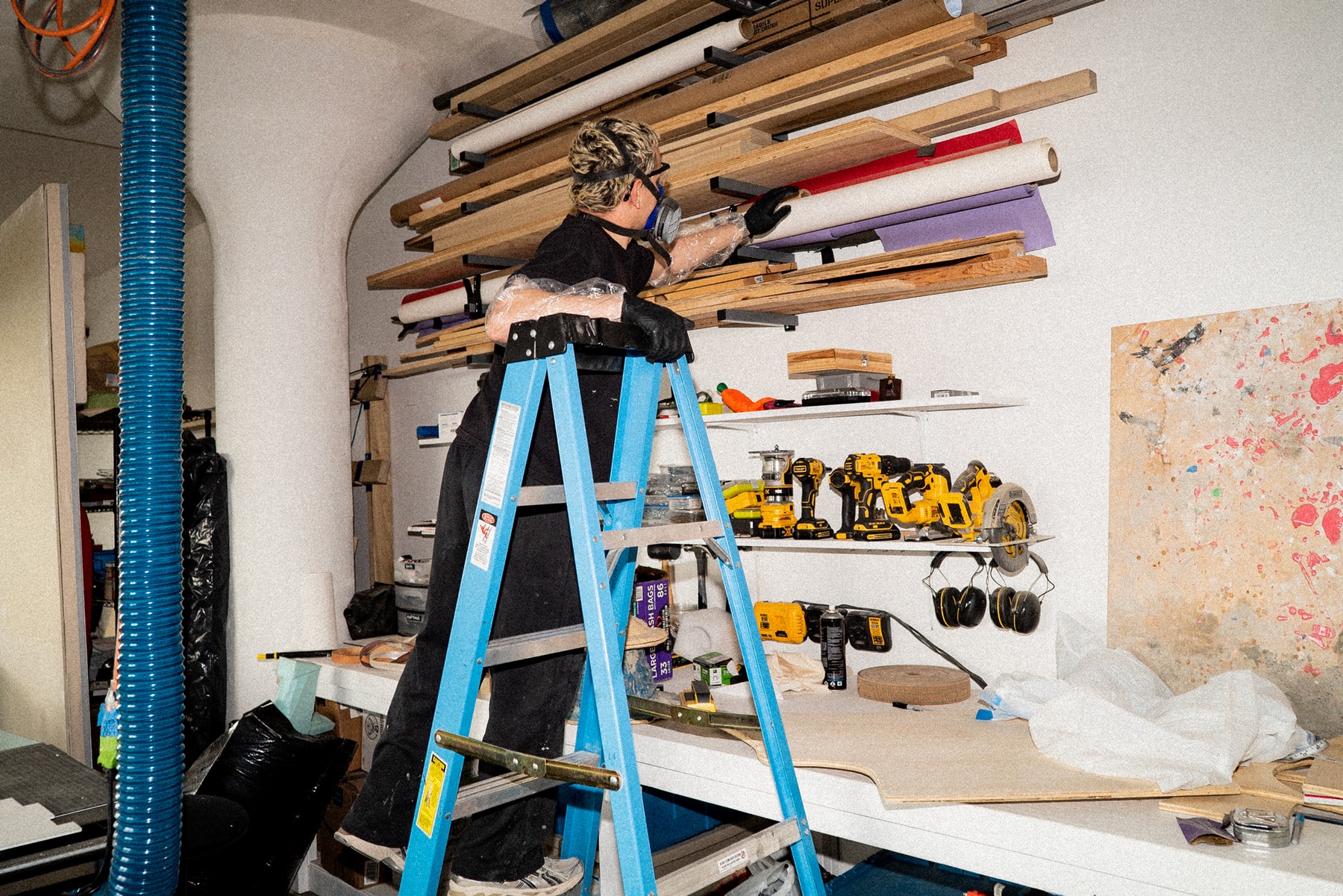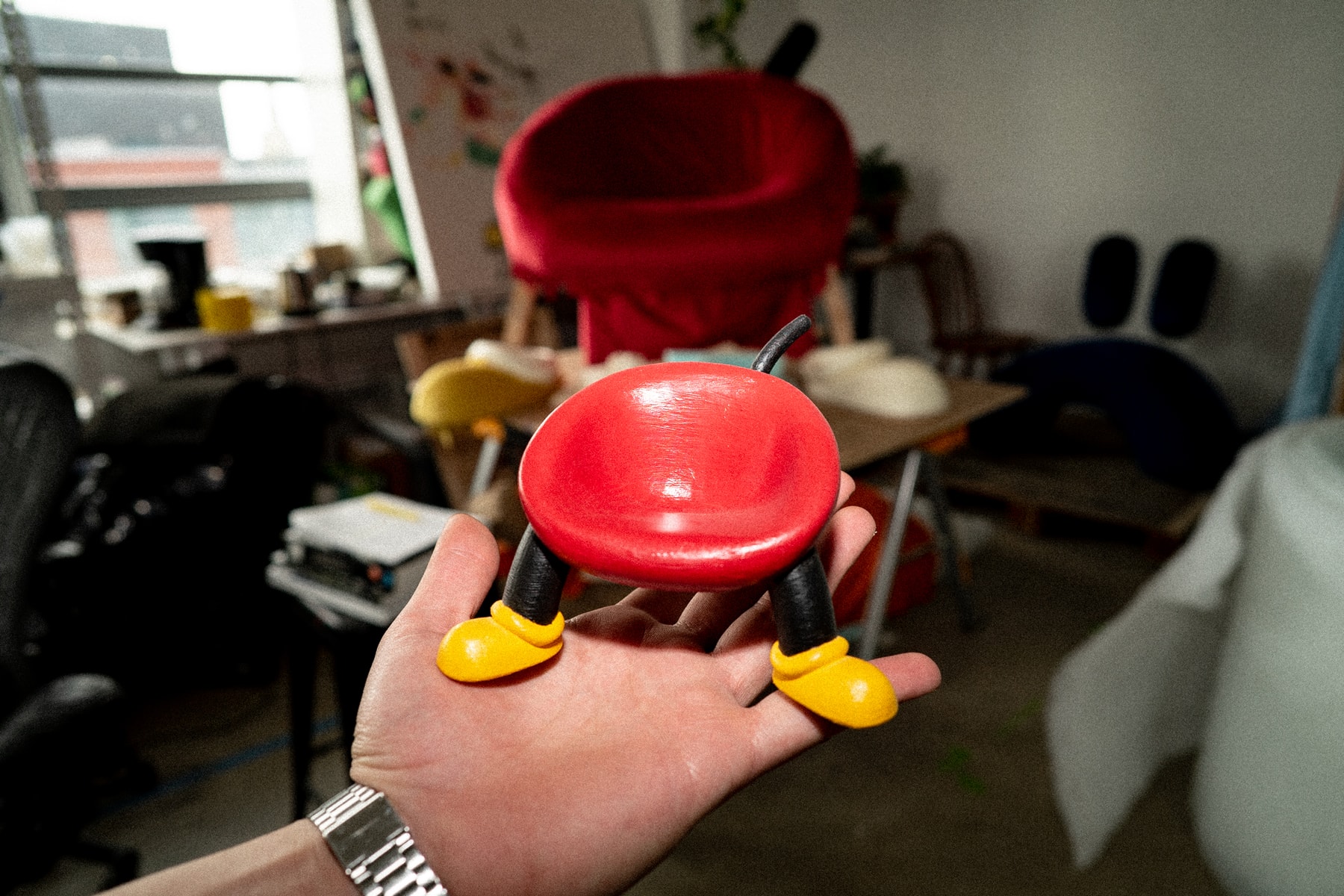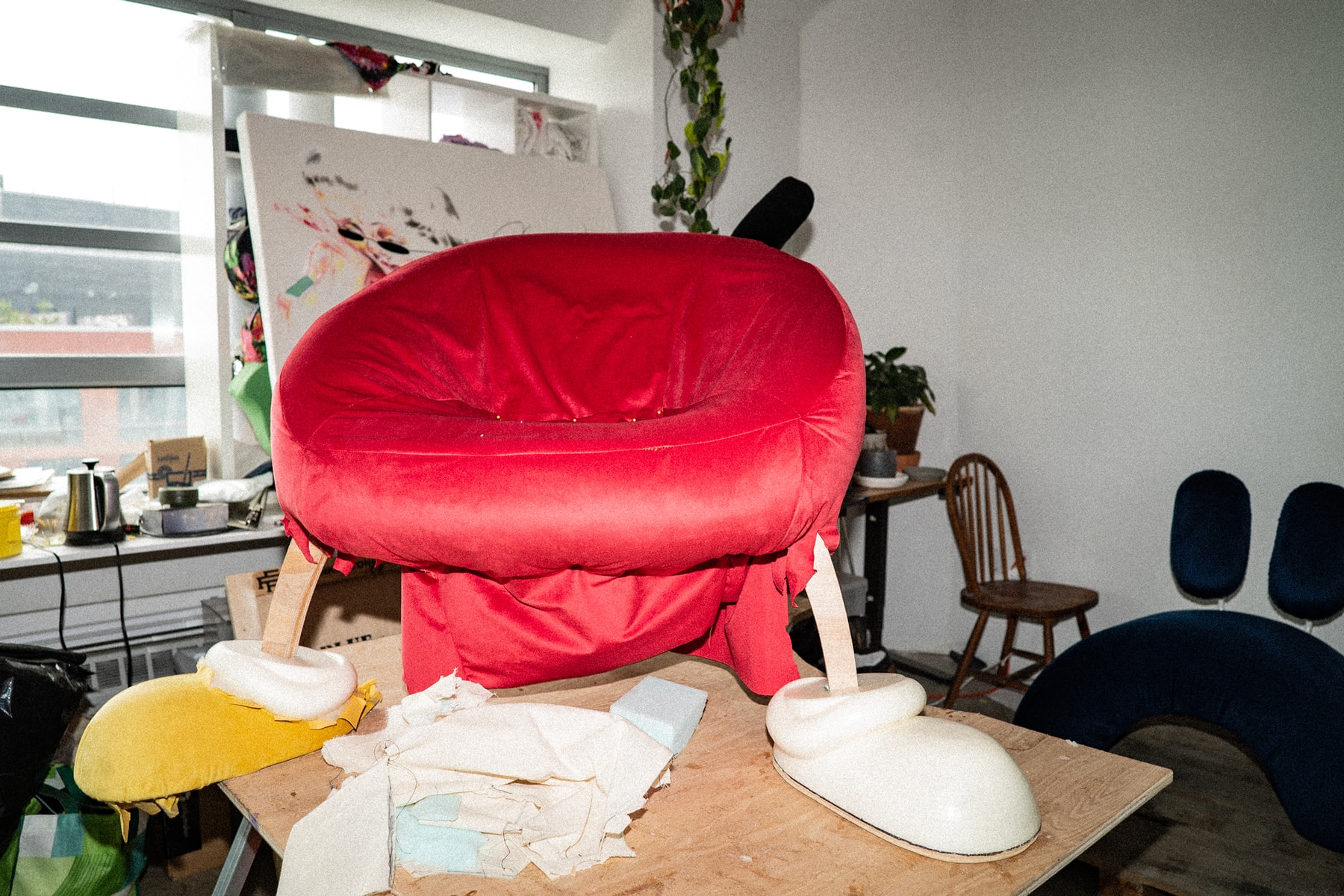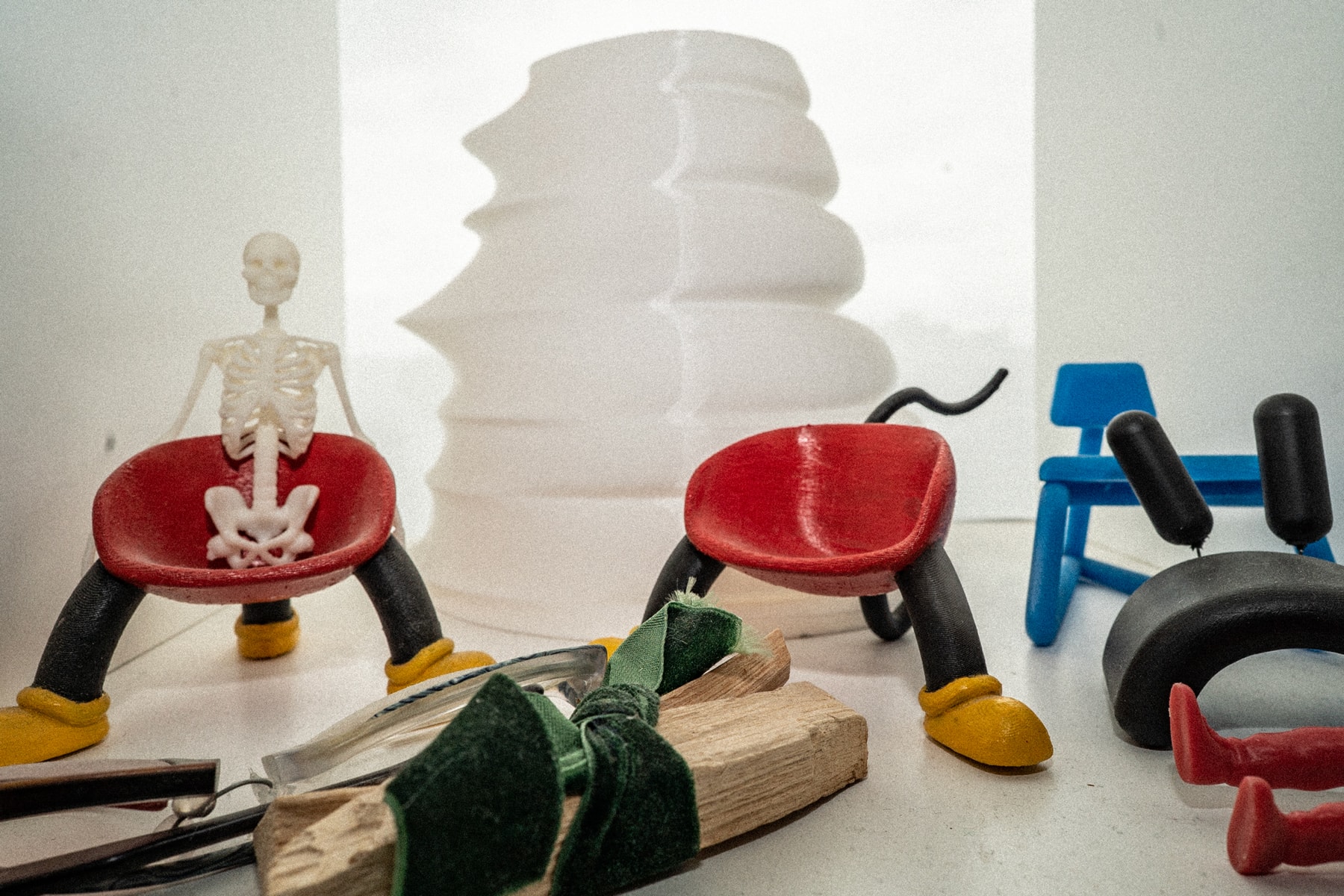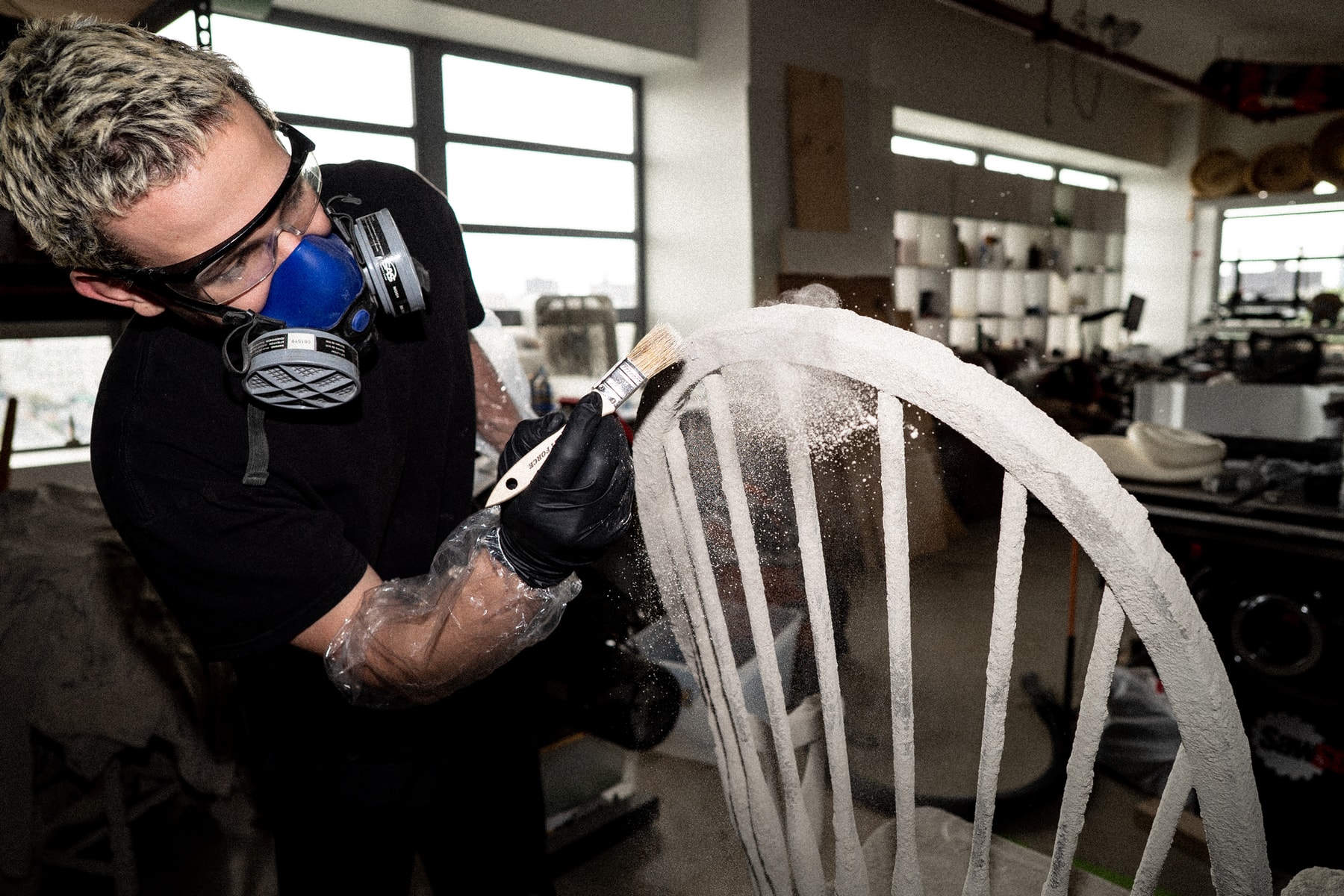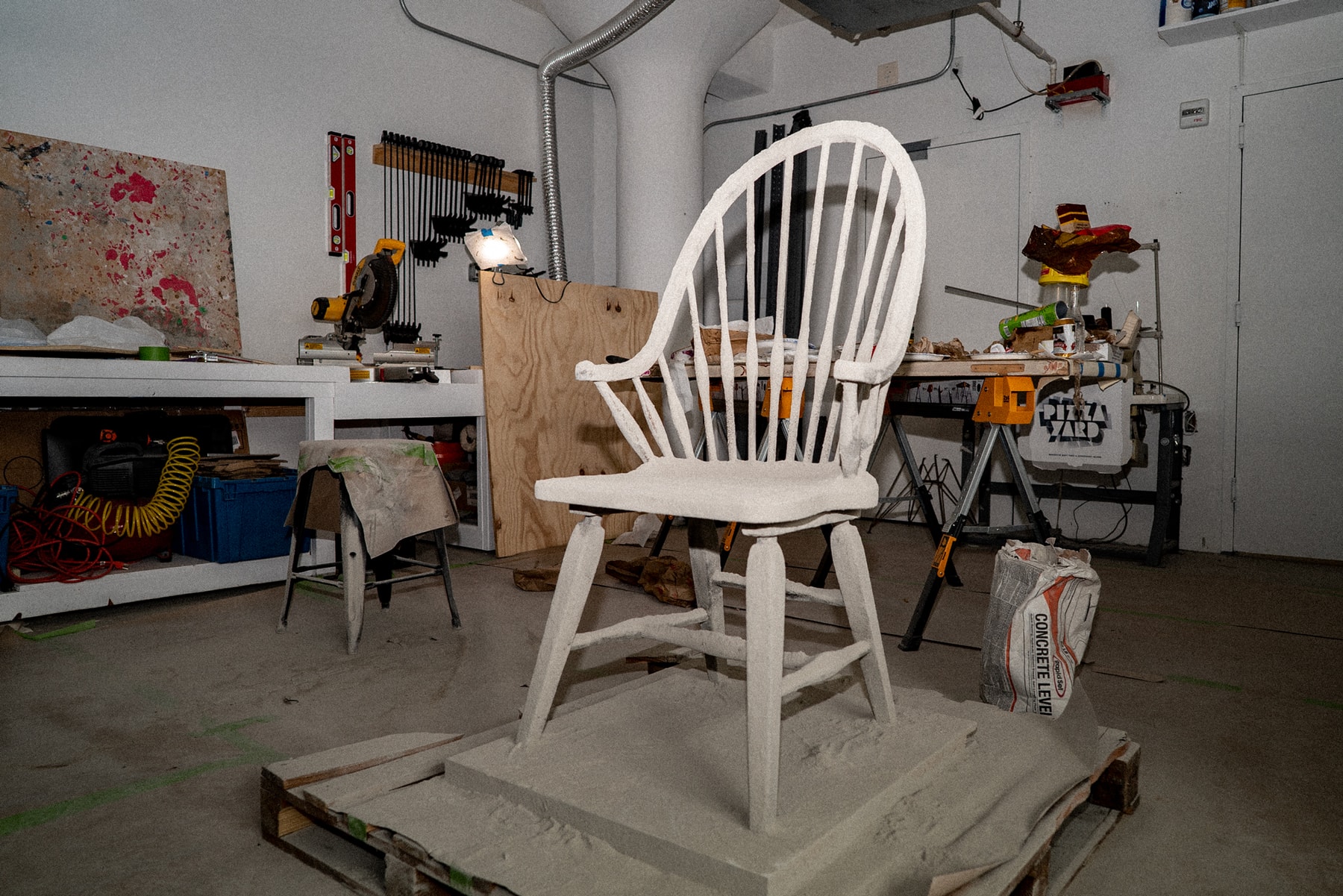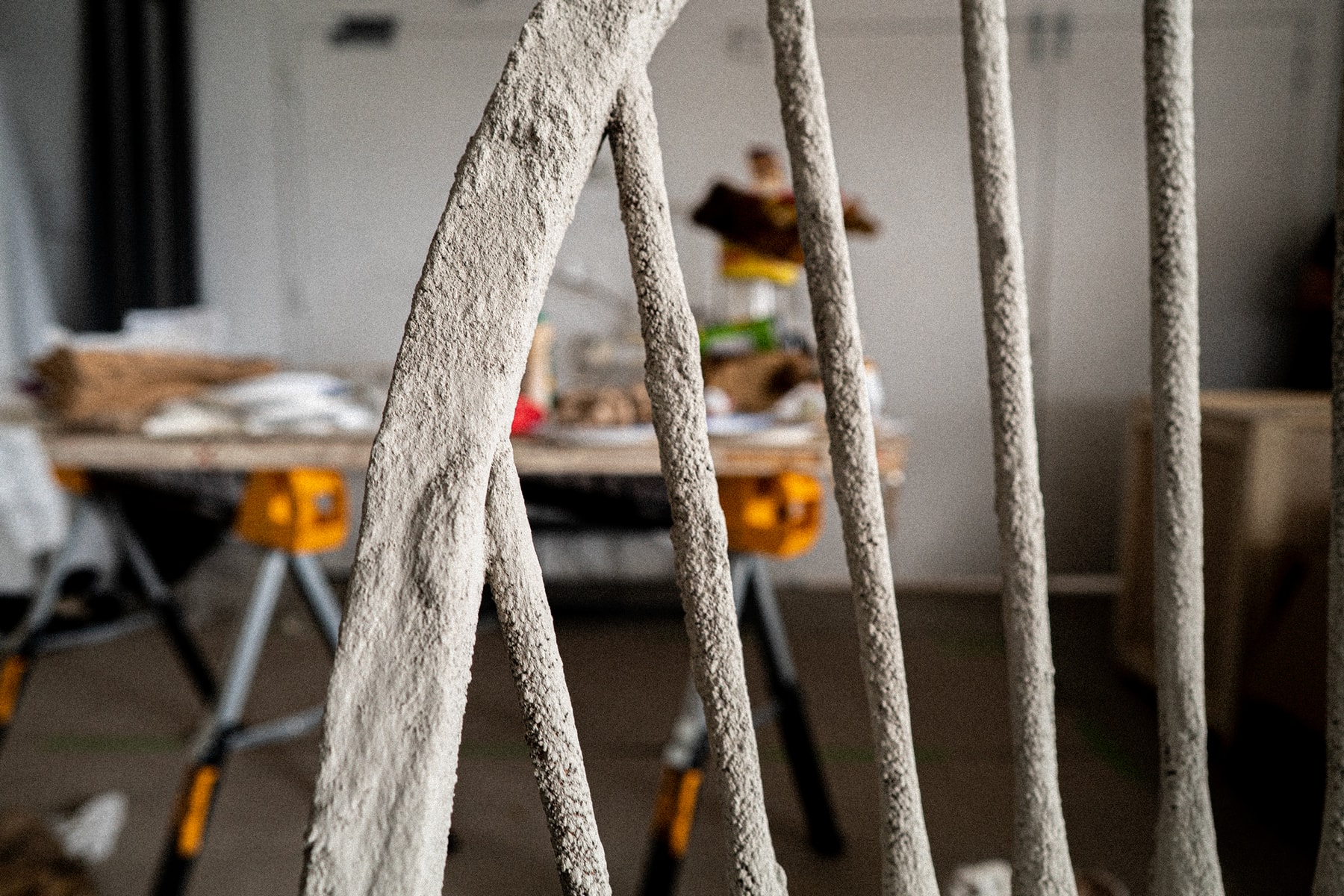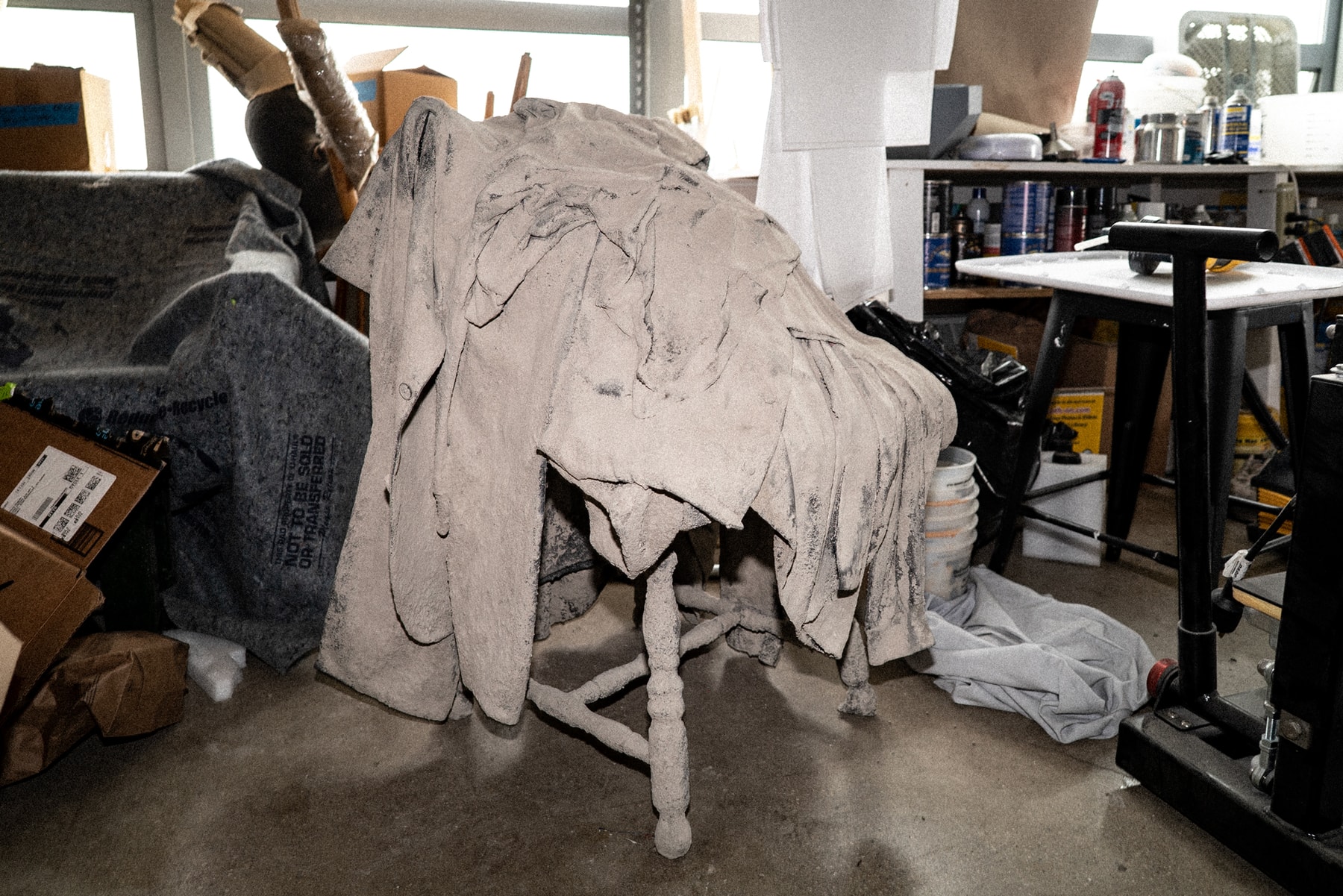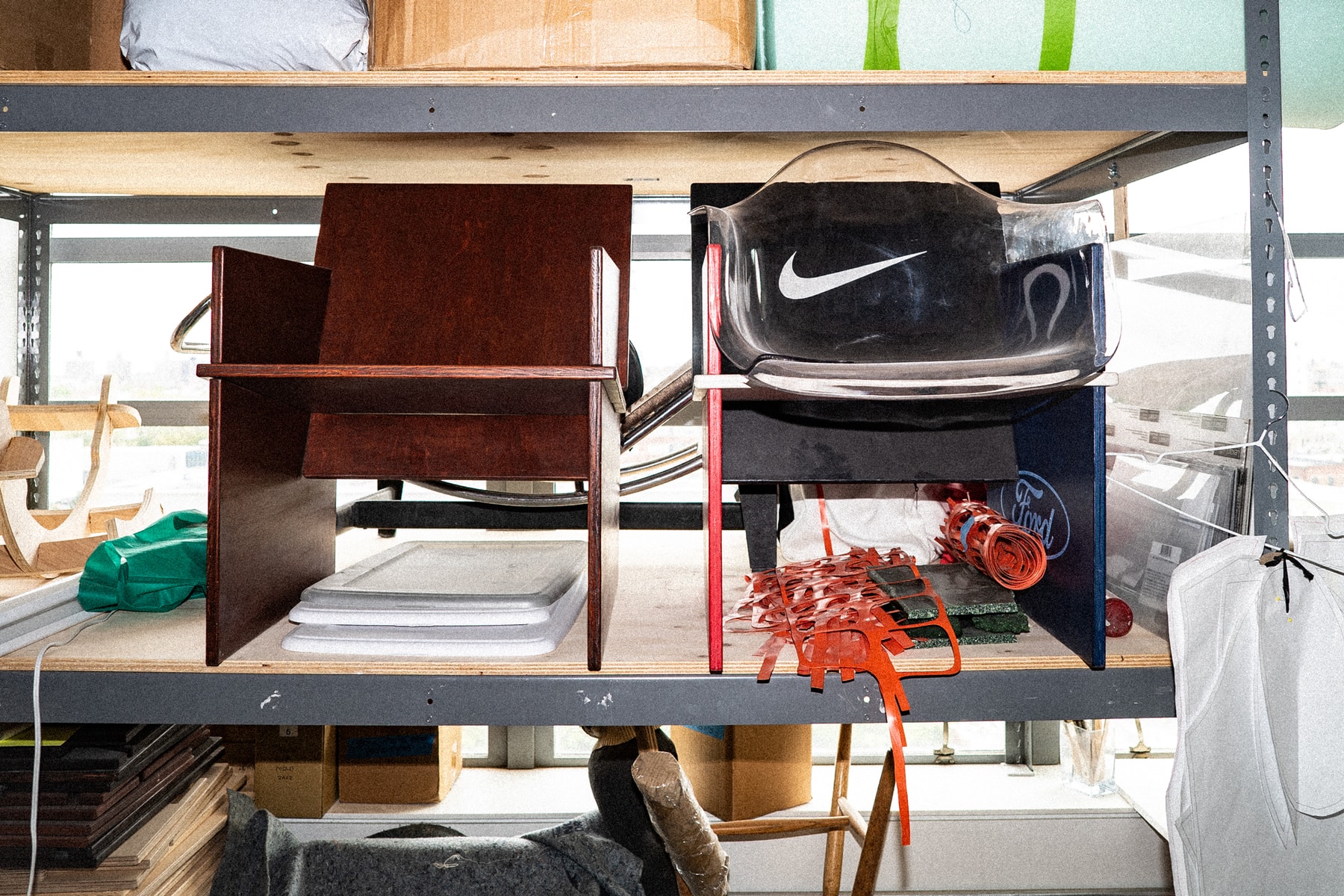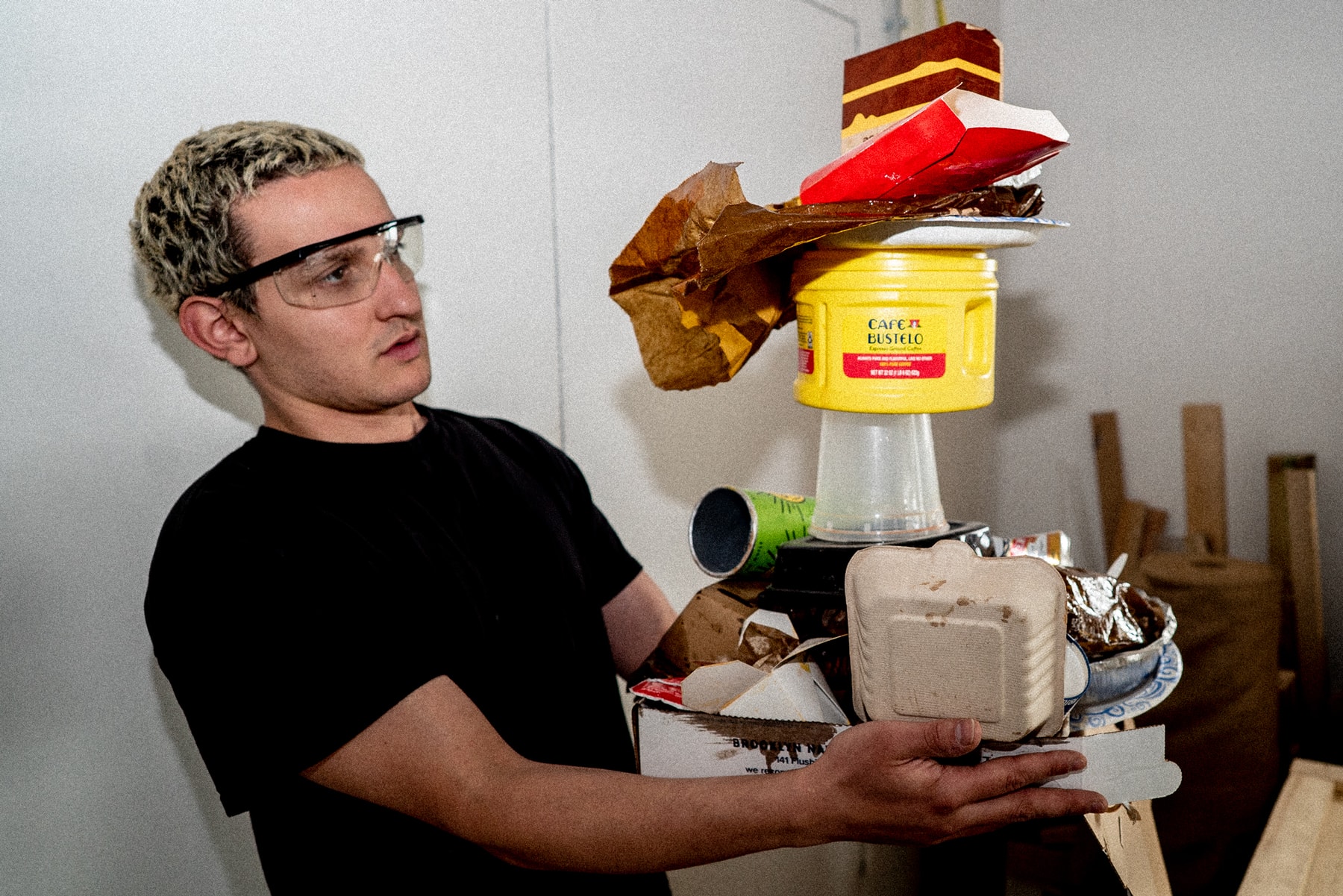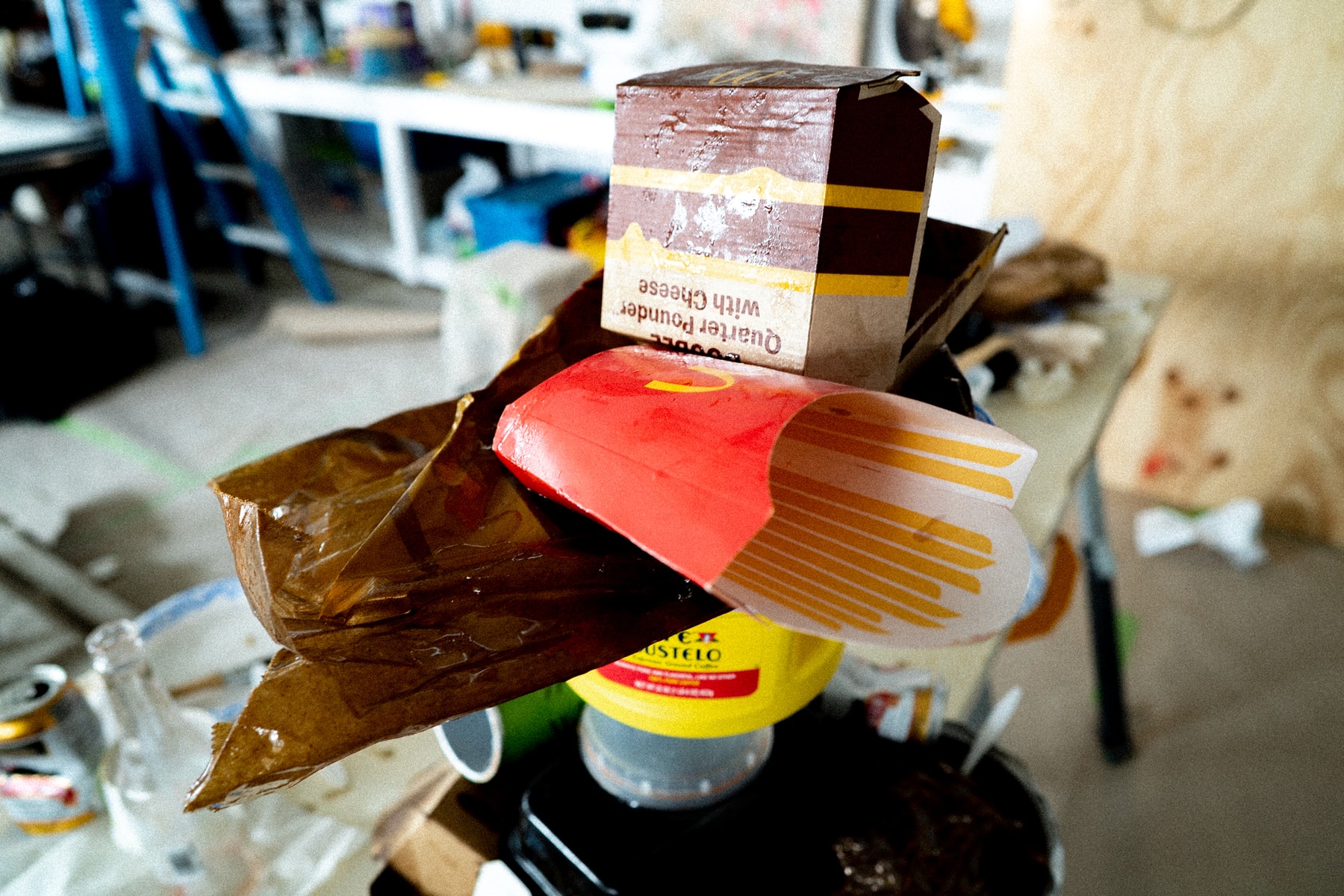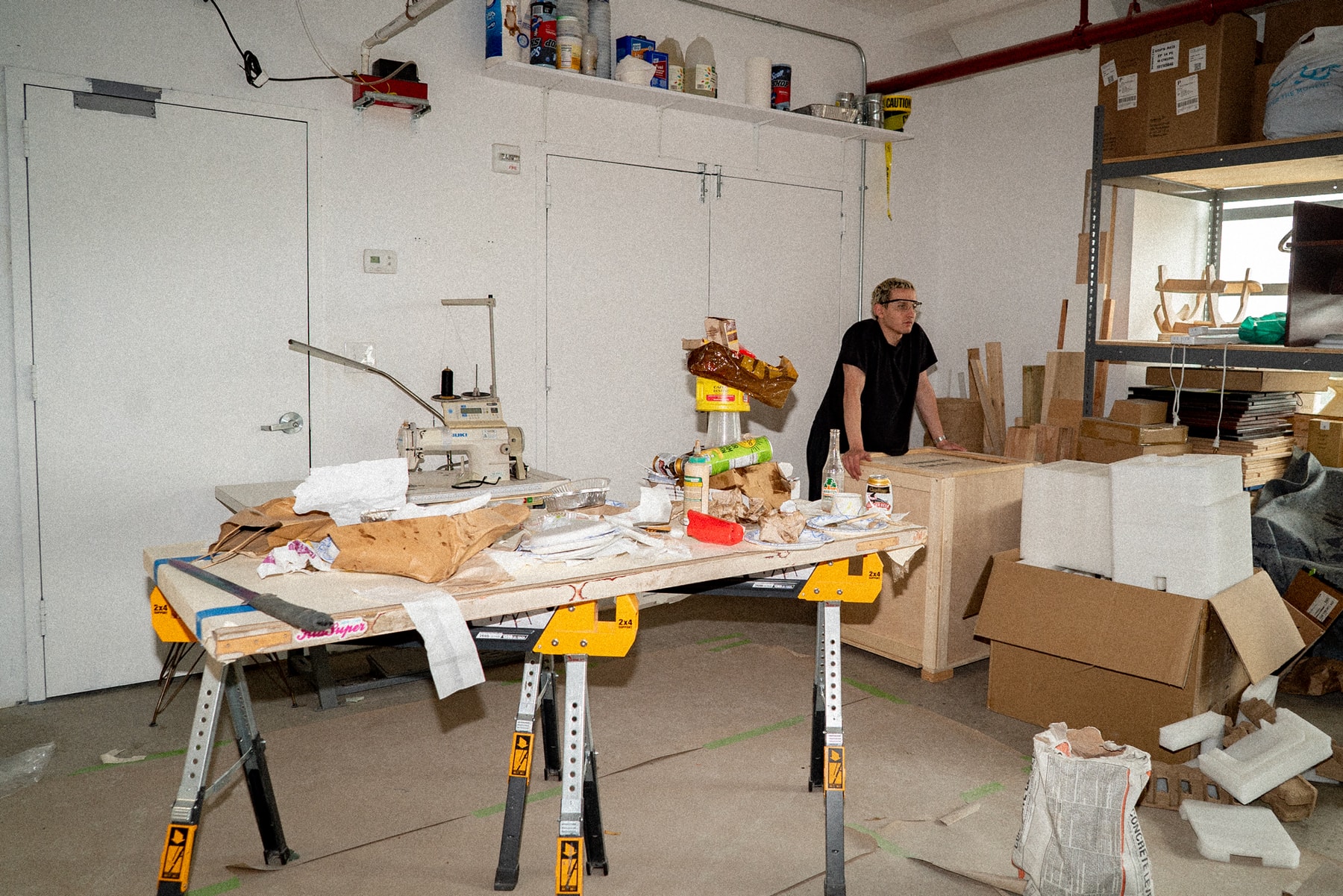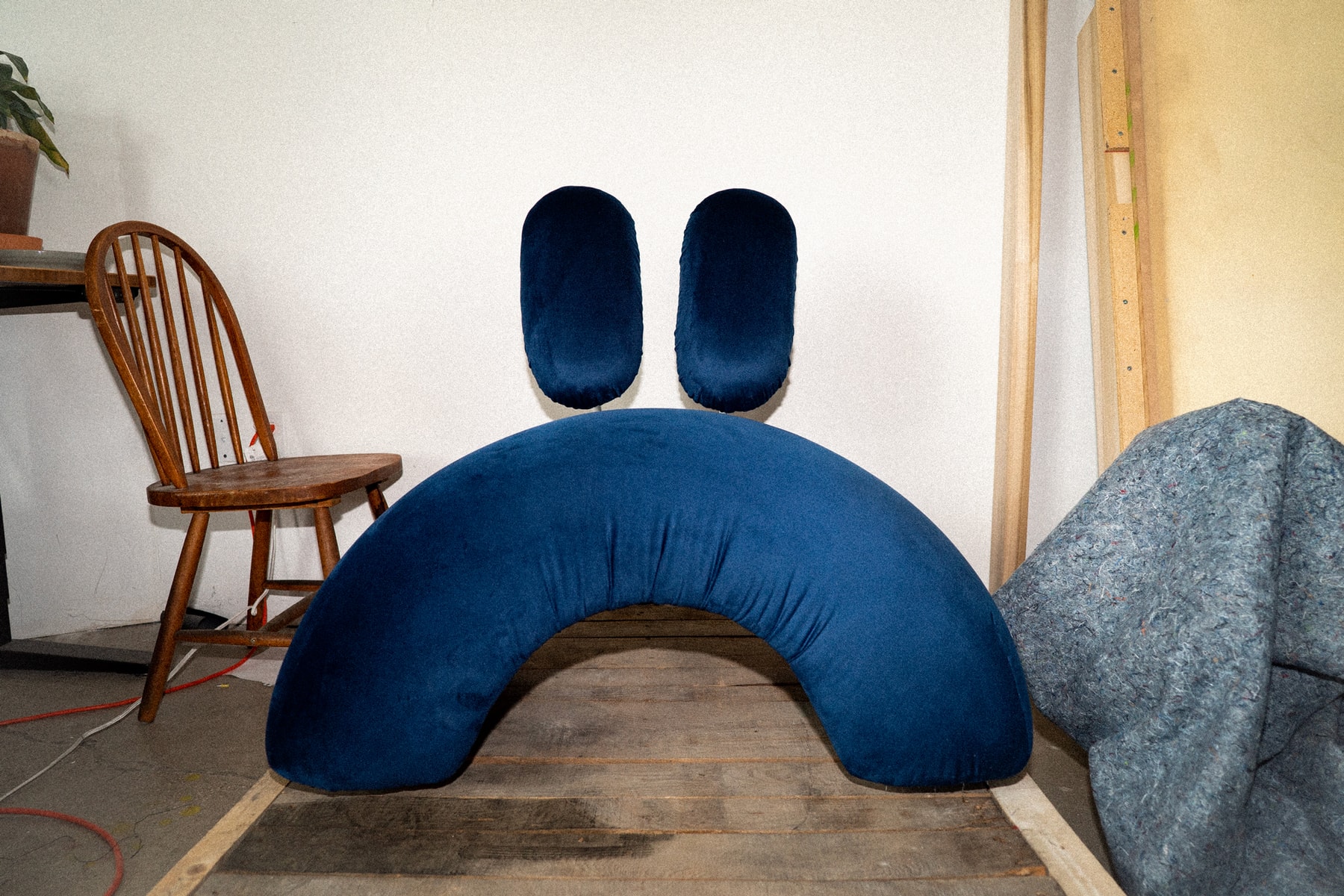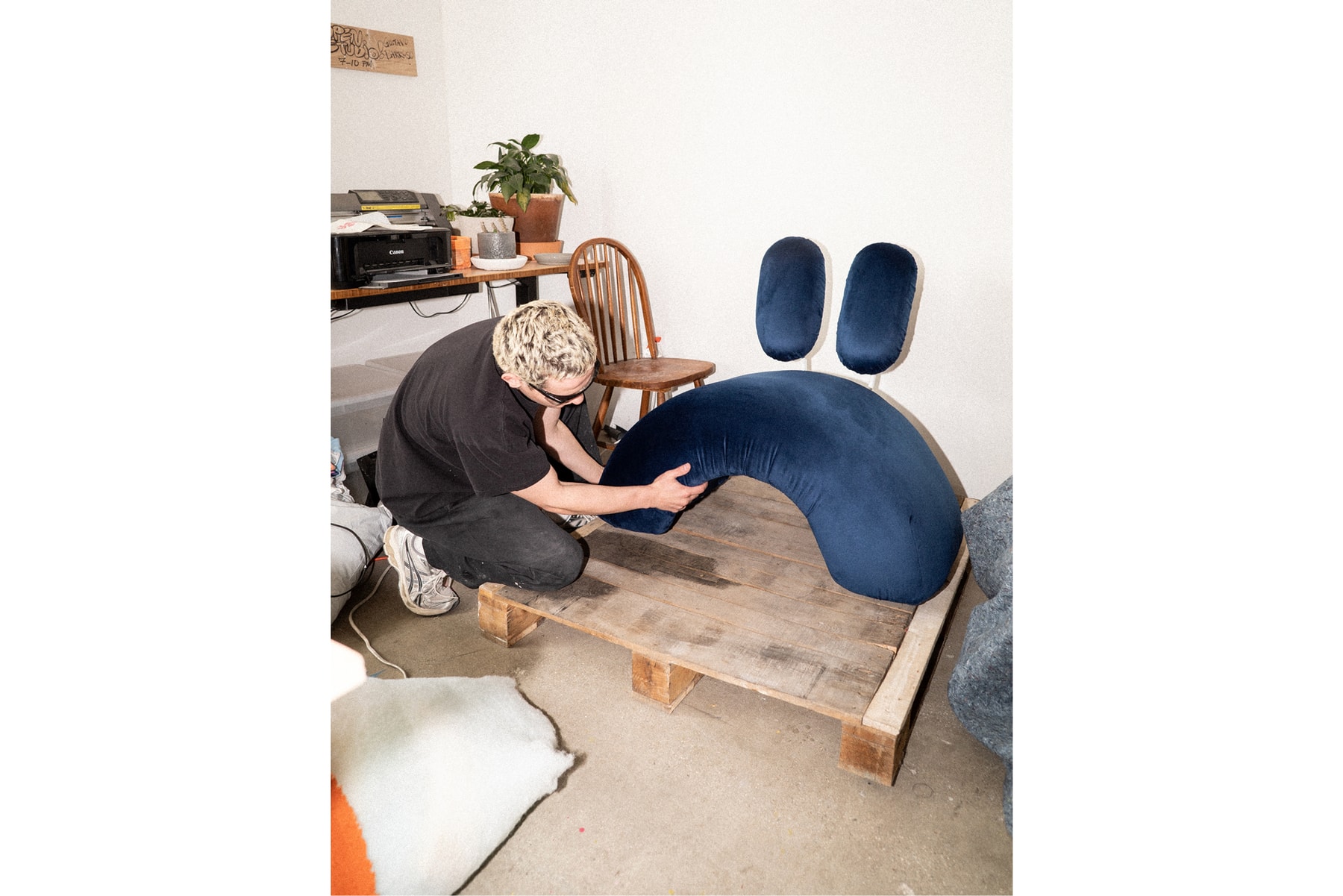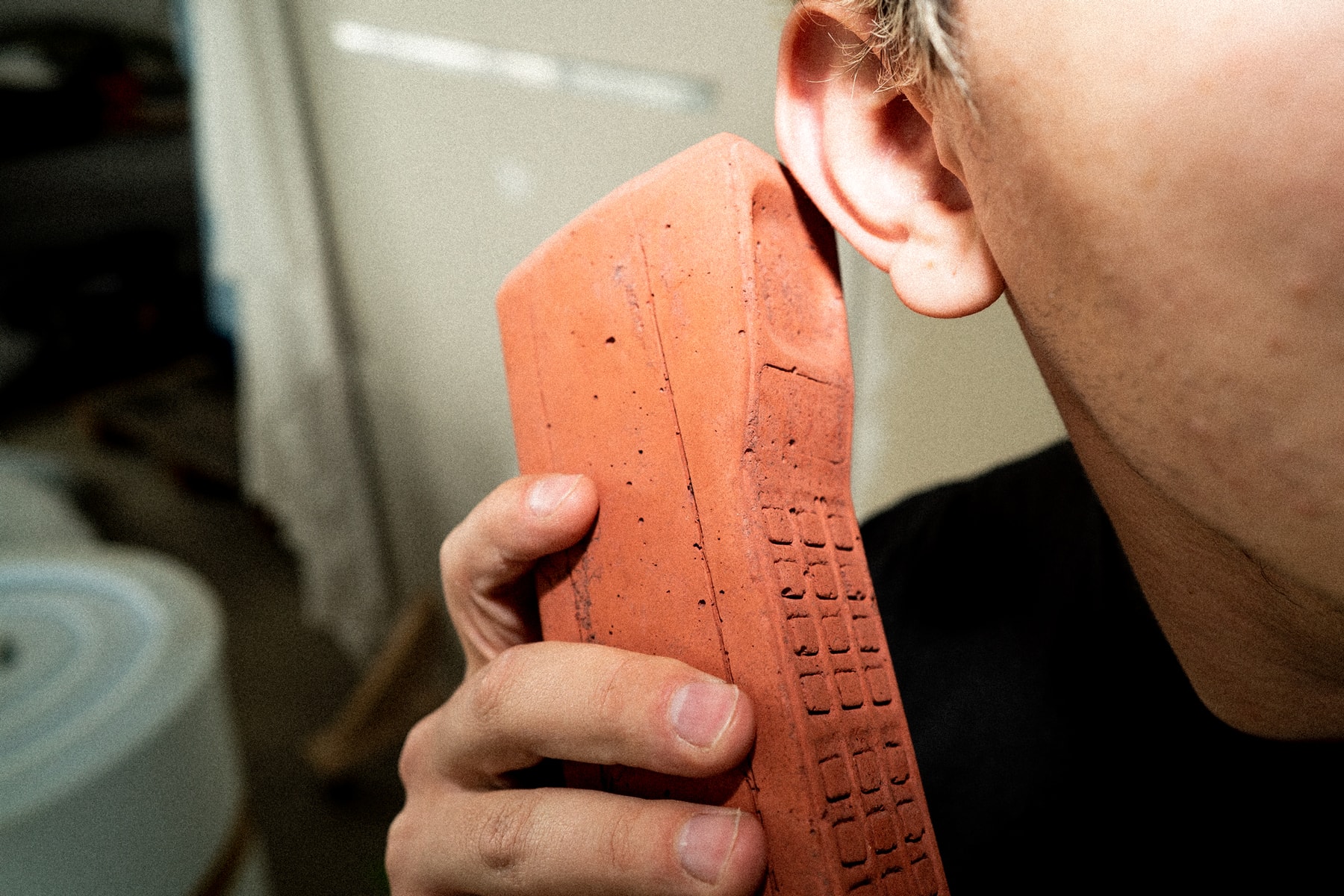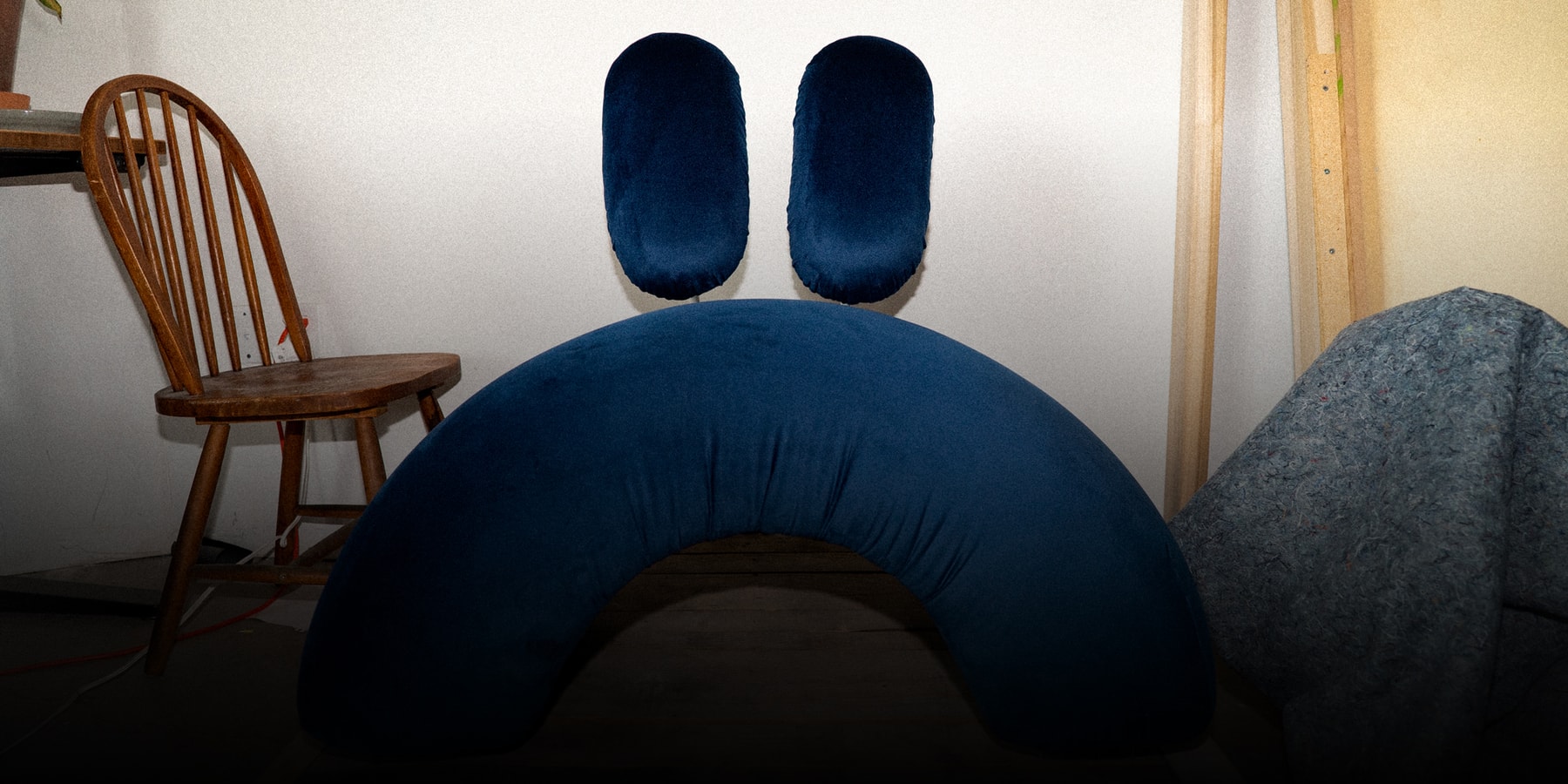
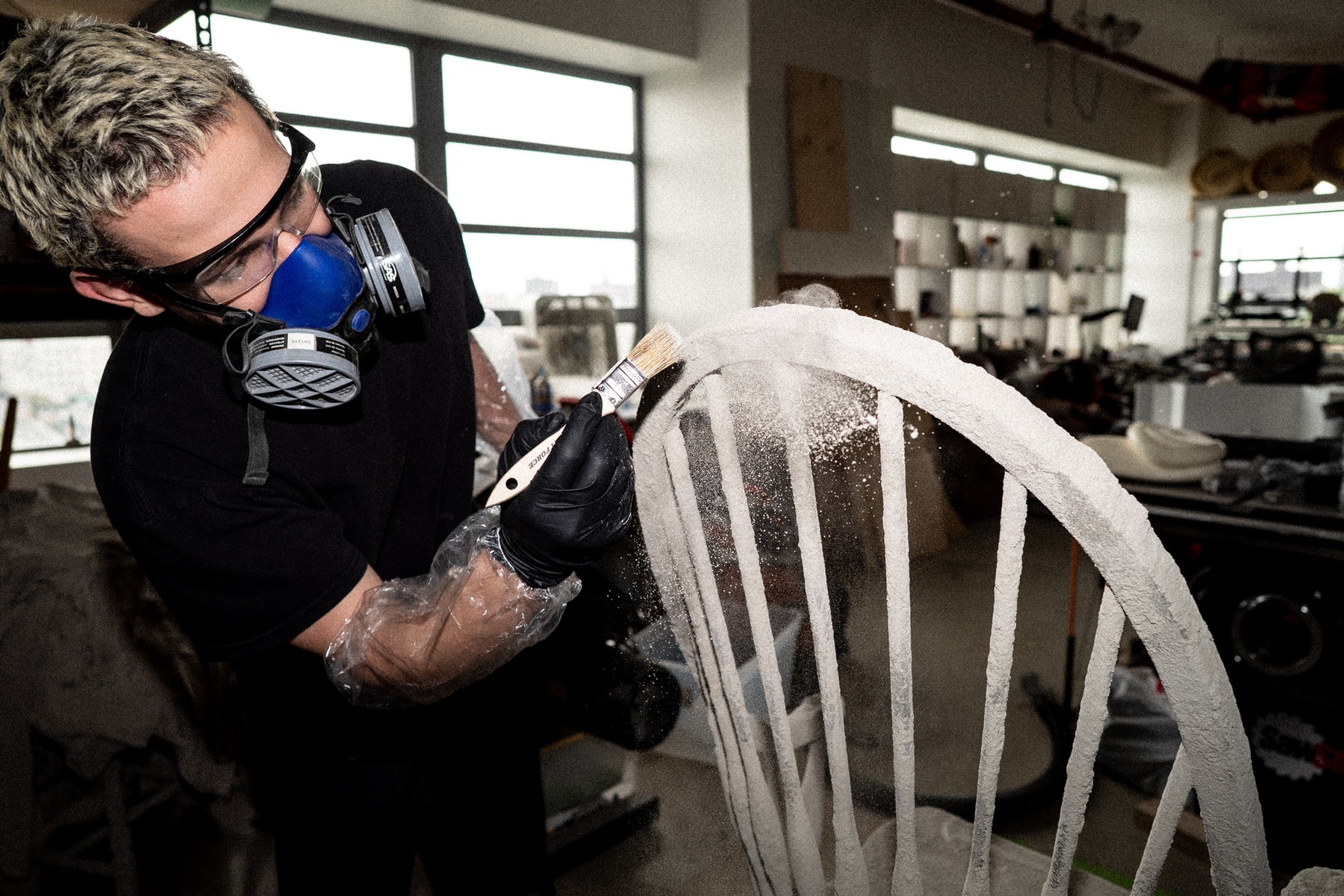
Gustavo Barroso, a Brazilian-American artist and designer, creates contemporary conceptual furniture and objects that transport viewers to enchanting landscapes. With a penchant for repurposing natural and discarded materials, Barroso crafts functional yet surreal pieces that offer an escape from the ordinary.
Barroso’s designs, such as his signature Slime Chairs and the Caution Tape Table, skillfully blend the concepts of separation and connection. Through his work, he aims to highlight the absurdity of life while fostering unity among people. His unique approach involves transforming everyday objects, like chairs, by tilting them or adding unexpected elements, injecting humor and playfulness.
Inspired by sculptor Wendell Castle‘s emphasis on storytelling and Daniel Arsham’s ability to construct immersive worlds, Barroso strives to create products that tell intricate stories and exude a stylishly cool aesthetic. He admires Castle’s focus on form and narrative, disregarding practical considerations, which is evident in Barroso’s recontextualization of Castle’s Long Night Chair. Barroso’s early exposure to design through streetwear brands like The Hundreds and LRG also influenced his intertextual approach.
“Through themes of subversion and absurdism, Barroso invites viewers to challenge preconceived notions and reevaluate their perspectives.”
Barroso’s journey as a sculptor began with his study of Industrial Design, but he felt confined by the traditional corporate path, leading him to pursue art as a medium for creative expression. Sculpture intrigued him the most, offering the freedom to materialize ideas in the three-dimensional world we inhabit. His work often revolves around repurposing found objects, with chairs symbolizing the human body and discarded items reflecting societal self-portraits. Through themes of subversion and absurdism, Barroso invites viewers to challenge preconceived notions and reevaluate their perspectives.
Barroso’s diverse range of mediums, including furniture, fashion, and product design, allows him to explore different forms of expression and embrace the boundless possibilities they offer. Collaboration is integral to his practice, and he values working with brands that prioritize creative freedom, seeking to maintain artistic integrity without compromises.By incorporating technology like 3D printing and virtual reality, Barroso embraces the transformative power of digital fabrication in the ongoing industrial revolution. These tools expand his creative possibilities, enabling him to sculpt in virtual reality and swiftly materialize his visions.
As Barroso’s artistic journey continues, he eagerly looks ahead to his upcoming solo gallery exhibition titled “Nothing to See Here” at KidSuper Gallery, scheduled for May 20th. This exhibition promises to showcase his latest creations and provide a glimpse into his evolving artistic vision.
“I like to use chairs because they represent the human body.”
Can you tell us about your journey to becoming a sculptor? What led you to pursue this artistic medium?
I studied Industrial Design and was feeling constrained by the traditional corporate trajectory so I leaned into making art. Sculpture allows for the most freedom and opportunities to articulate ideas in the physical realm. We live in a three dimensional world afterall.
Your work often features repurposed found objects. How do you go about selecting these materials, and what draws you to them?
I use what is most readily available and helps me tell the story best. I like to use chairs because they represent the human body. Our trash is also a self-portrait of ourselves.
“Absurdity is a tool for self-reflection.”
Can you speak to the themes and motifs present in your work, such as subversion, absurdism, and the regenerative nature of your thematic vernacular?
Absurdity is a tool for self-reflection.
You have worked with a variety of mediums, including furniture, fashion, and product design. Is there a particular medium that you prefer working with, or do you enjoy the diversity of exploring different forms of expression?
I need to explore to feel free.
Collaboration is an important part of your work, having worked with several well-known brands. Can you talk about your process for collaborating with companies and how you integrate your artistic style into their projects?
It can widely vary. Sometimes brands approach me and already have an idea in mind, other times I approach them with ideas. Right before graduating, a professor advised me to “say yes to everything”. I can’t really do that now, but I am always excited to work with brands who value creative freedom. Ideally, in the process, we make zero compromises. With the exception of a few things, I produce everything in-studio. I’d love to start working more with brands who leverage specialized production technologies and innovative materials. Once the conversation starts, you never know where you’ll end up!
“The concept is the foundation and glue of everything.”
Technology also plays a significant role in your creative process, including the use of 3D printing and virtual reality. Can you elaborate on how you incorporate technology into your art and how it influences your work?
We are amidst an industrial revolution. Digital fabrication is a broad range of tools that are incredibly democratic and they afford average people unprecedented manufacturing capabilities. I can sculpt something in virtual reality and hold a three dimensional representation of it the next day. There is still so much more to explore.
Can you walk us through your creative process from idea generation to final product? How has your process evolved over time?
It usually starts with writing. I used to avoid research and reference, I’ve been reading a lot more and now I embrace and include references at varying degrees of obviousness in the final work. . The concept is the foundation and glue of everything.

“I grew up reading HYPEBEAST, so this is a cool moment for me.”
What was the inspiration behind the Orlando Chair? How did that piece come to be?
Disney World in Orlando was the first place I went to when we immigrated to America. I saw a big mouse walking on two feet there. Many years later I found a picture of Wendell Castle’s “Is It Yesterday” chair and within the proportions of the chair’s legs I saw an immediate connection between the two images.
Your work has been featured in several prestigious publications and exhibitions. Is there a particular moment in your career that stands out as a highlight?
This! I grew up reading HYPEBEAST, so this is a cool moment for me. I am grateful to everybody who shares my work and gives me opportunities to showcase my ideas. From the publications and curators to the kids on instagram, it’s all extremely humbling to me.
Lastly, what can we expect to see from you in the future? Are there any upcoming projects or collaborations that you’re excited to share with us?
May 20th, from 6-9pm! My first solo gallery exhibition titled ‘Nothing to See Here’ at KidSuper Gallery!
All photography courtesy of Keith Estiler of Hypeart







